Giuseppe and Pitero Perruzzini, two brothers living in Le Marche, in the small hamlet of Santa Lucia di Calamello, of Cartoceto di Pergola, to be precise, made the discovery of their lives on 26th June 1946. During the excavation works to build a drainage channel they found a metal element…and also another and another…for a total of 318 parts weighing 900 pounds! They soon realized that they had probably real gold in their hands. They were close enough: what they found turned out to be Roman gilded bronze pieces. The law is clear in Italy: what is found underground belongs to the state. They tried to keep their find a secret and sell it, but a number of archaeologists from Urbino and Ancona put a stop to that and everything was confiscated.
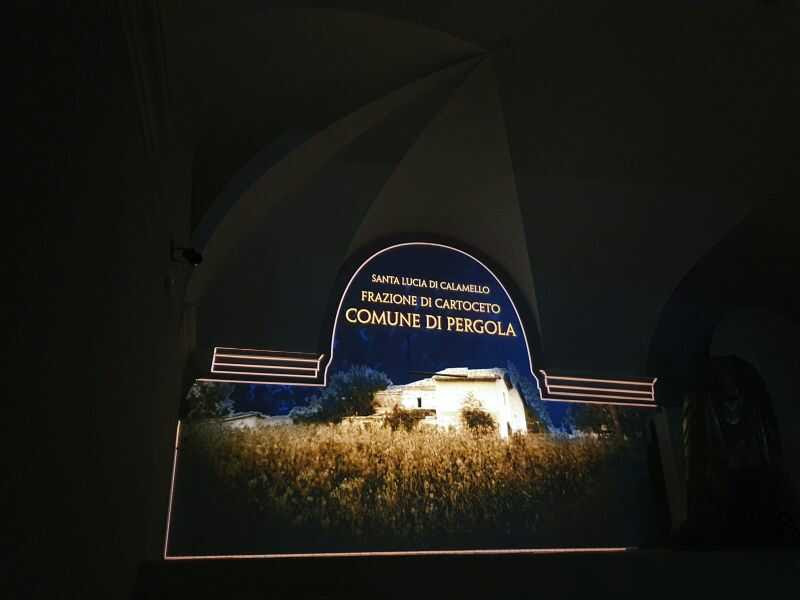
From then on, an exciting historical thriller started. The historical significance of the findings was soon recognized; the Roman gilded bronze elements in fact could possibly belong to a group of statues.
In 1949 Florence undertook a 10-year restoration, in which all elements were puzzled into one group of statues: two female figures and two men on horseback.
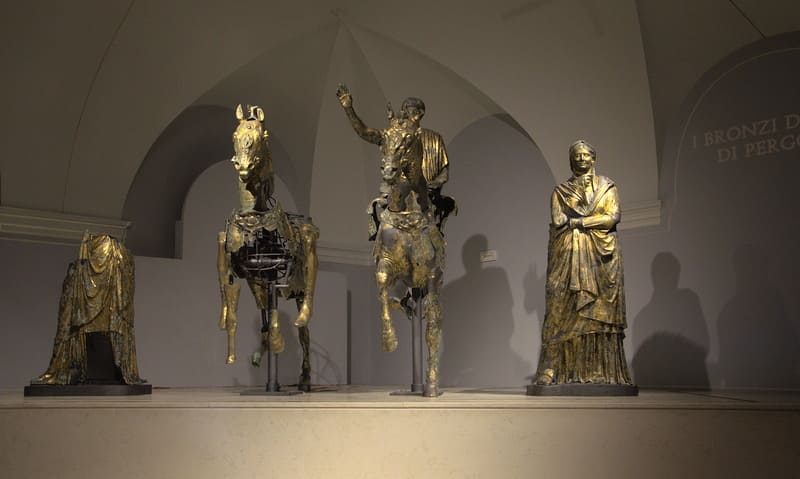
This group of statues subsequently moved to the Archaeological Museum of Ancona. Unfortunately, an earthquake struck this city in 1972 making the museum inaccessible. Time for a second and more thorough restoration in 1974 back to Firenze again.
After 13 years, Pergola was allowed to temporarily exhibit the sculpture group. The chosen place was the ex-monastery San Giacomo (13th century). The exhibition was such a success that they no longer wanted to return the images to Ancona. In fact, the inhabitants of Pergola bricked up the entrance to the monastery and the statues could no longer be viewed for five years; here’s the beginning of the tug-of-war between Ancona and Pergola.
After a 5-year stay in a poorly acclimatized room, the Bronzi Dorati or Gilded Bronze statues were allowed to return to Firenze to be refurbished once again…
Eventually it was decided that the statues belonged to Pergola and the adaption works in the former monastery soon began.
End of story? Not at all! In 1999 it was decided to show them in both Ancona and Pergola: one city would house them for six months, whereby a copy would replace them temporarily and vice versa.
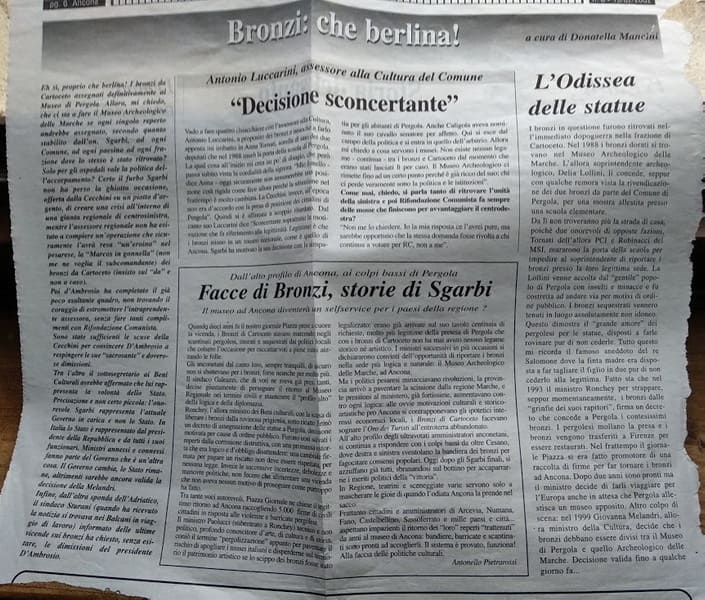
In 2002 (with a reconfirmation in 2008) the statues were finally assigned to Pergola. However, in 2012 the case with Ancona wanting its crown reopened…
In the meantime, we’re already in 2021 and for the moment being, Pergola is still the place to be to admire these unique pieces. For nowhere else, not even in Rome, has such a well-preserved and reasonably complete group of gilded bronze horsemen from the Roman period been discovered. After all, this kind of statues were usually melted down over the centuries in order to produce coins, weapons or other objects.
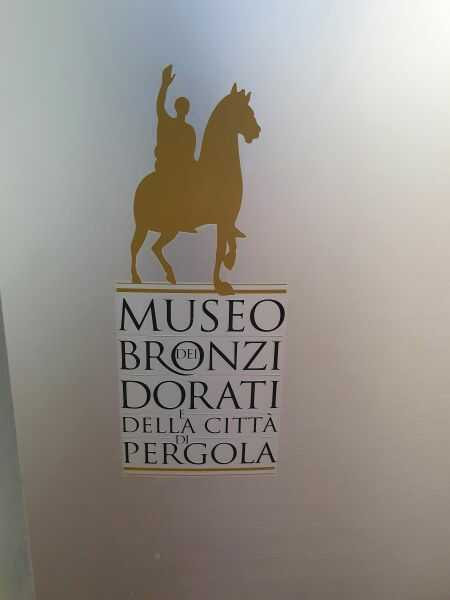
The anniversary of the 75-year discovery of the Bronzi Dorati should therefore not just pass by, thought Wijnand Luttikholt, a Dutchman who has lived in Pergola for years and runs his Ca’Palazzo.
Through Evert de Rooij, author of 2 excellent Dutch guides about Le Marche, he came into contact with the Dutch artist Wil van der Laan. The latter saw the Roman gilded bronze statues, which gradually gave rise to the idea for bronze heads of illustrious Roman emperors
At Wijnand’s invitation, Elke, Isabelle and I visited the exhibition “The Roman emperors in bronze” and the museum of the Bronzi Dorati.
You may expect we visited the San Giacomo monastery from the 13th century, but we didn’t. The monastery was closed during the unification of Italy in 1861 and after that it served as an orphanage, hospital and eventually became a school. Today, the high school and the museum share the entire building.
(In our opinion, the Bronzi Dorati and the special exhibit deserve an article on their own, so we’ll save the description of the museum for a future post.)
Wijnand led us to the acclimatized room of the Roman statues: impressive say the least! They stand up there, from a high podium, staring at the visitors!
The special video screening with meticulous projections on the statues, the stage and the walls leave an awe-inspiring impression; it is as if the Roman statues come to life and are allowed to shine one more time…Even those who do not understand Italian will enjoy this display!
Especially the majestic horses shine in all their splendor. The artist who created this group of sculptures showed all his skills in the numerous details of the main decorations of the horses: heads from the Roman world of gods such as Jupiter, Venus, Mars, Mercury, Minerva, Juno and Neptune.
We are amazed… But who were these two women and two men? Most likely they belonged to the elite of Roman society, perhaps a senator and a high-ranking army officer with their wife and mother… the international scientists defend several theories regarding these figures: were they members of the Imperial Giulio-Claudia family who were disgraced and whose signs had to disappear? Or maybe high nobles venerated in a certain town near Pesaro and hidden during the barbarian raids? Statues intended for a municipium and robbed and buried during transport by the robbers, but never excavated again? Members of the senatorial family de Satrii from nearby Sentinum, who once disgraced in Rome had all their testimonies destroyed?
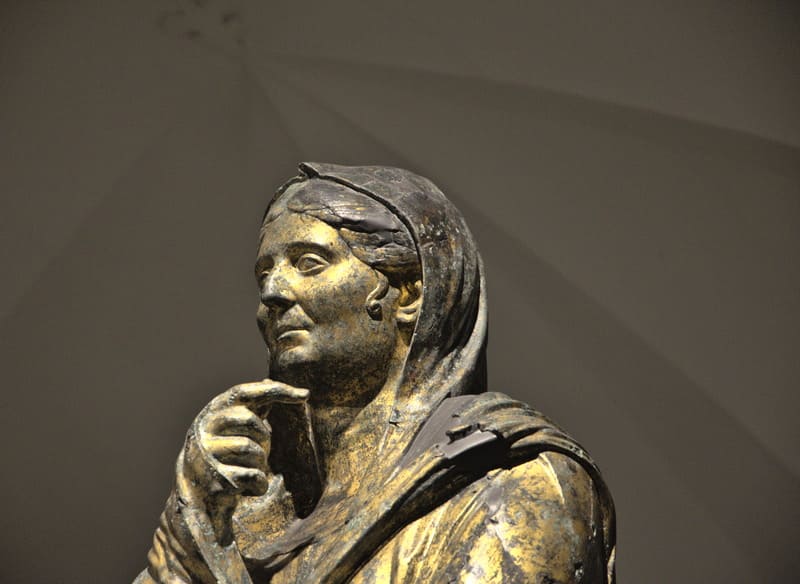
It is also still not known where those statues come from, where they stood and how they ended up in Cartoceto. What is certain is that the statues were smashed to pieces before they disappeared underground. Perhaps they were discovered as early as 1861 by the Banda Grossi, a gang that traveled in the north of Le Marche and perhaps hid them underground? It’s not a secret that there was a great Treasure of the Banda Grossi …
After this we follow Wijnand to the courtyard,
where the gilded bronze Julius Cesar seated on his horse welcomes us.
Wil van der Laan placed Caesar in the center surrounded by the five bronze heads of the emperors Augustus, Nero, Trajan, Marcus Aurelius and Hadrian.
All heads rest on natural stone from Puglia, but processed in Acqualagna. The wooden pillar for Caesar consists of pine, the imperial heads are on holm oak wood. The exhibition was opened on June 26, 2021, the day that the beautiful Roman works of art were discovered 75 years ago.
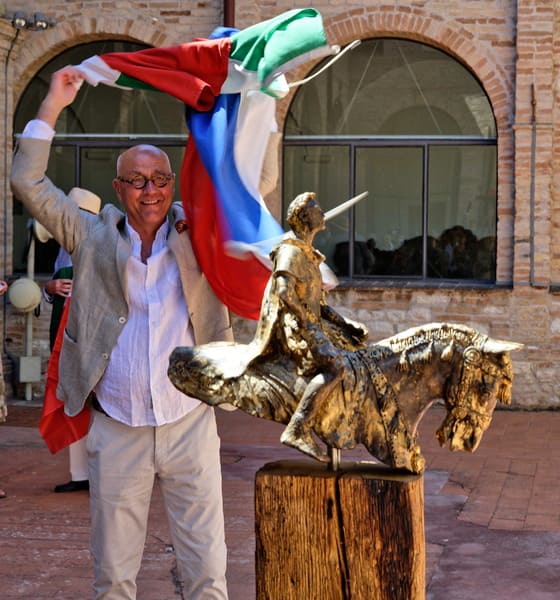
Thanks to Wijnand for the interesting tour!
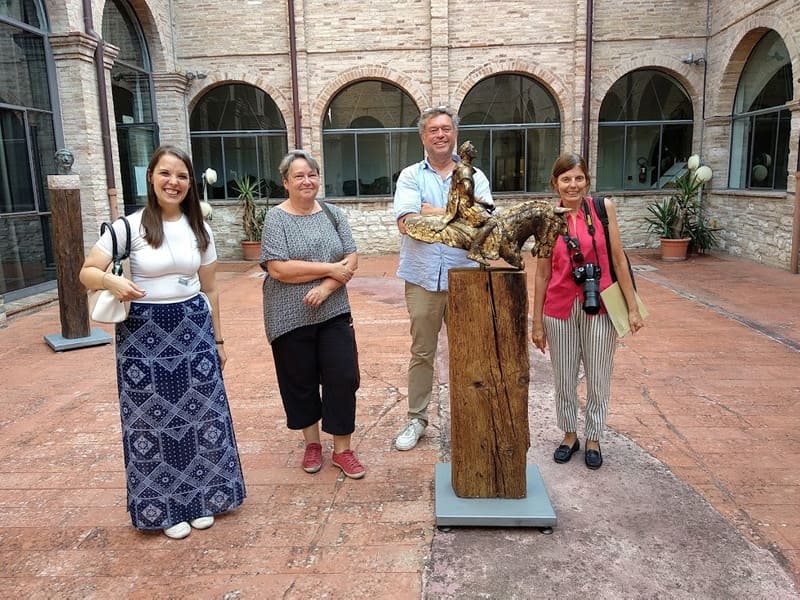
If you want to view the exhibition, you can do it until 24 October 2021 from Tuesday to Sunday between 10.00-12.30 and 13.30-18.30. Closed on Mondays.
Of course you will also visit the Bronzi Dorati !!
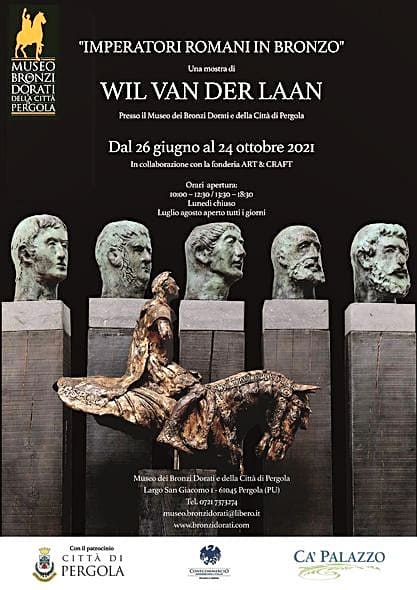
Tip: Would you like to learn more about the history of the Bronzi Dorati? Then buy the book in the museum: Museo dei Bronzi Dorati e della Città di Pergola. It has an English translation.
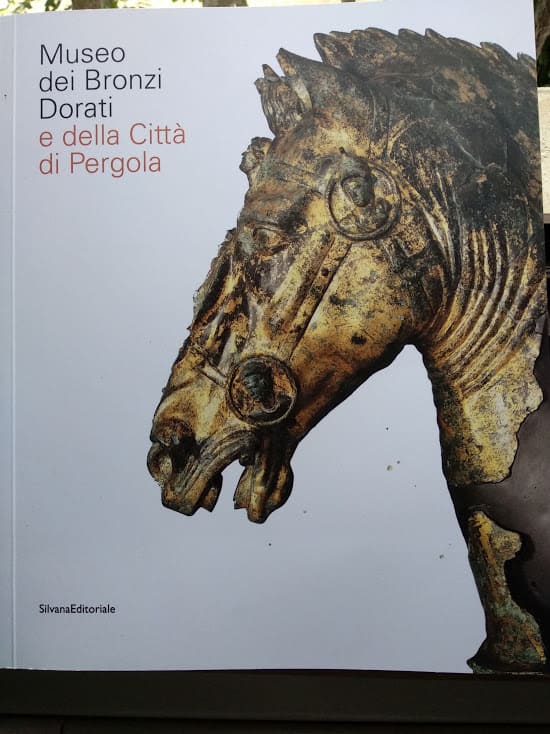
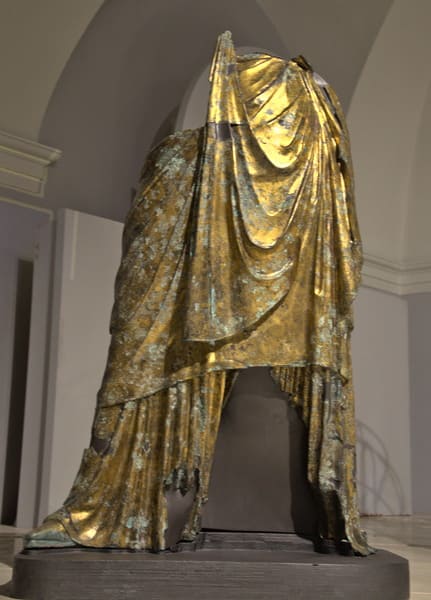
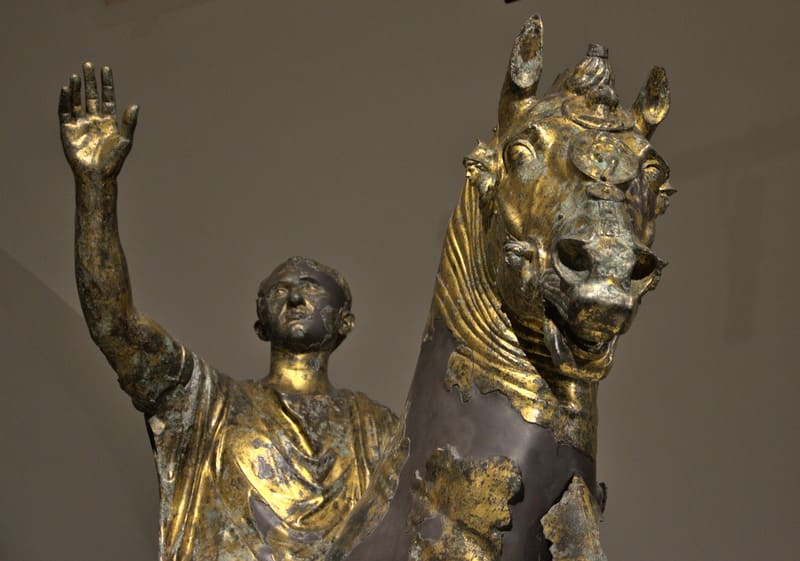
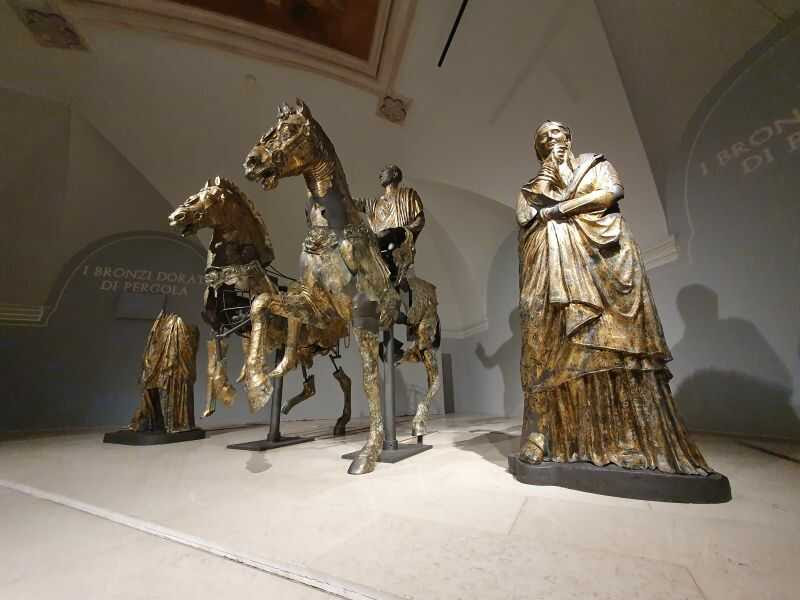
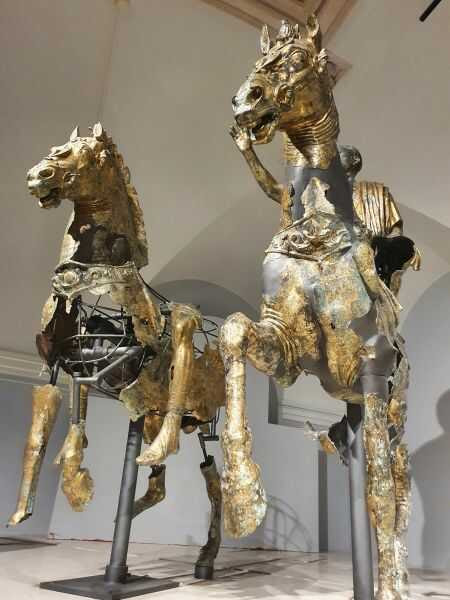
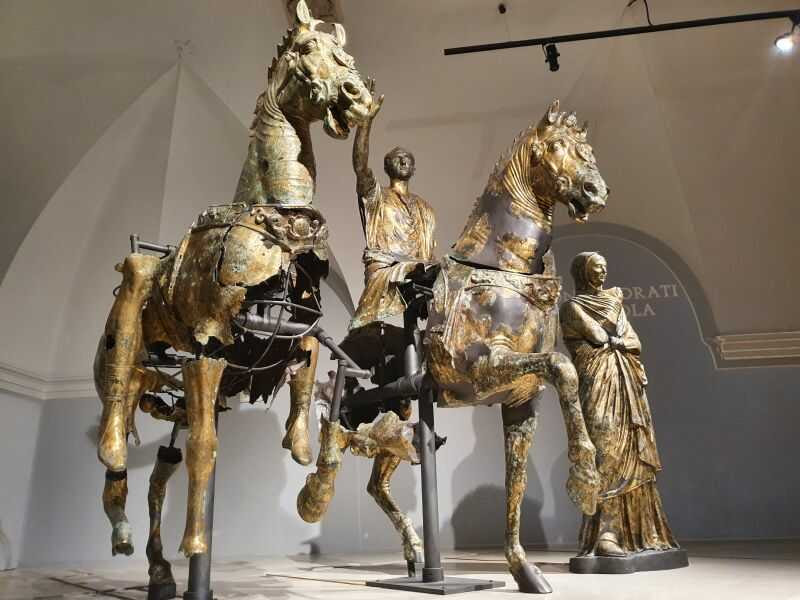
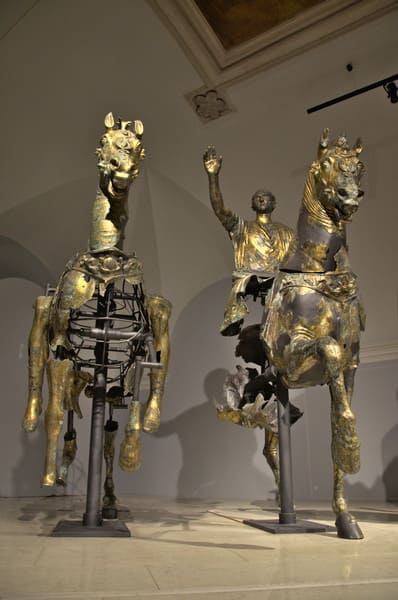
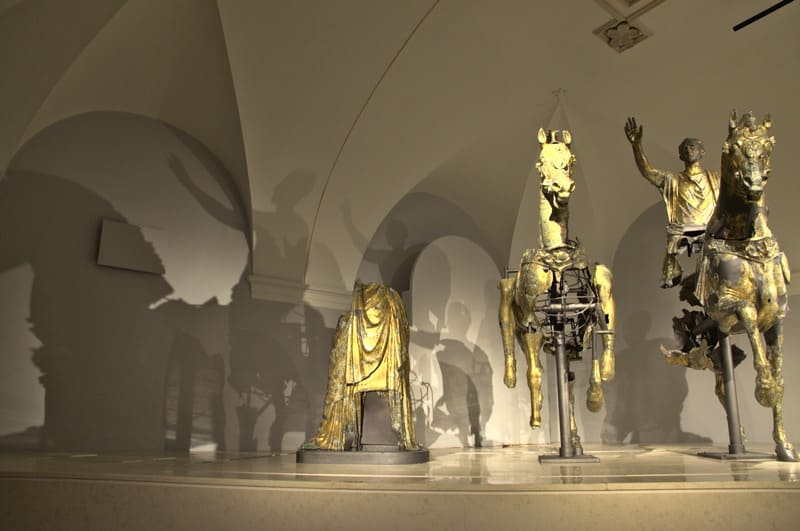
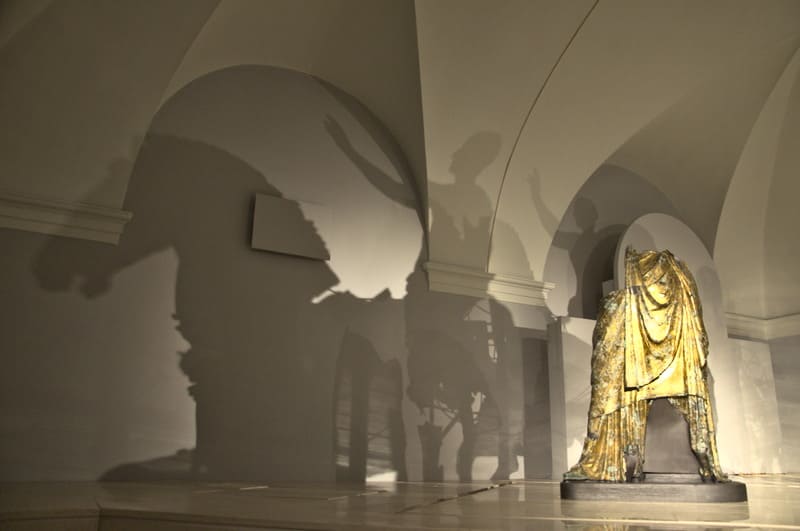
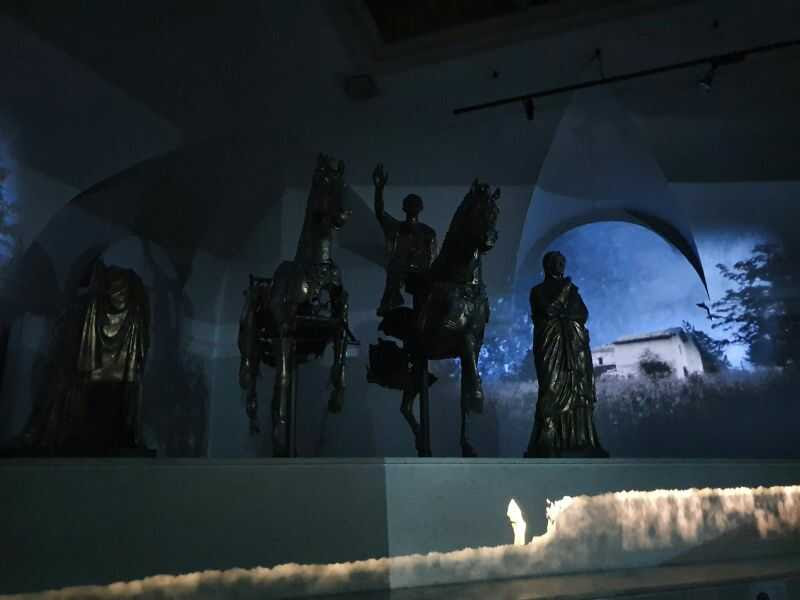
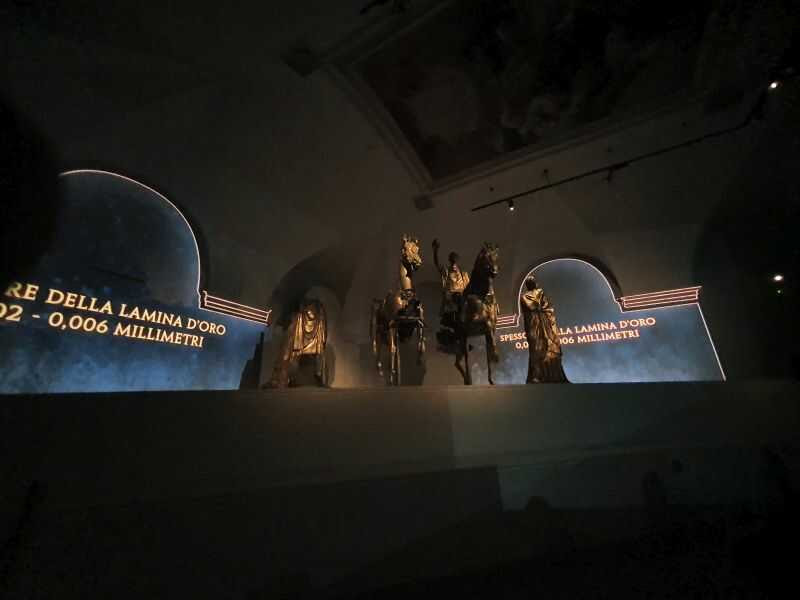
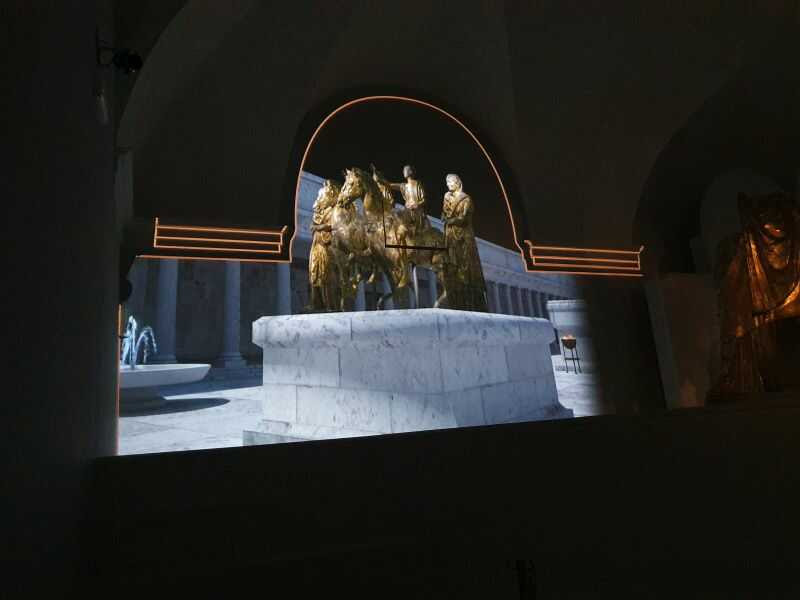

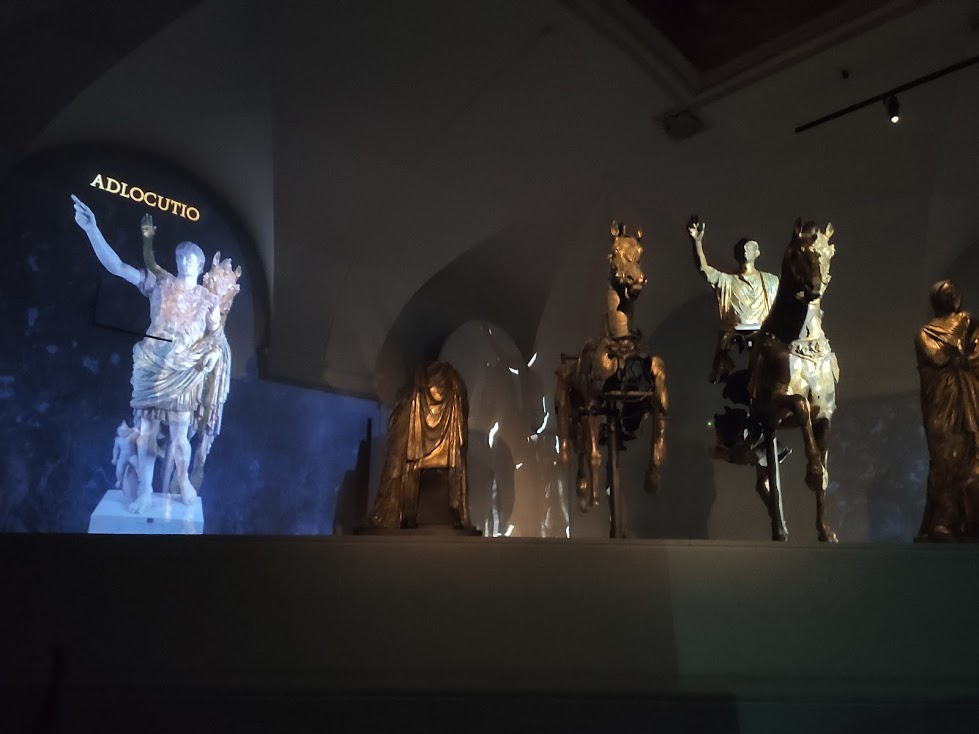

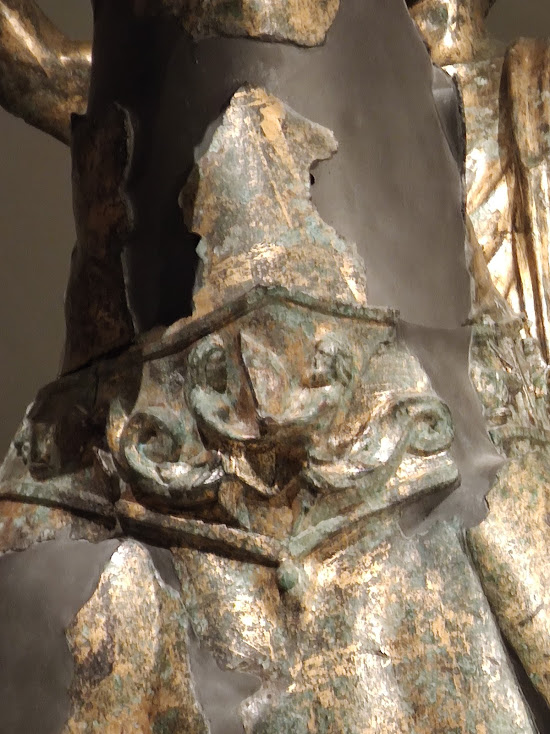


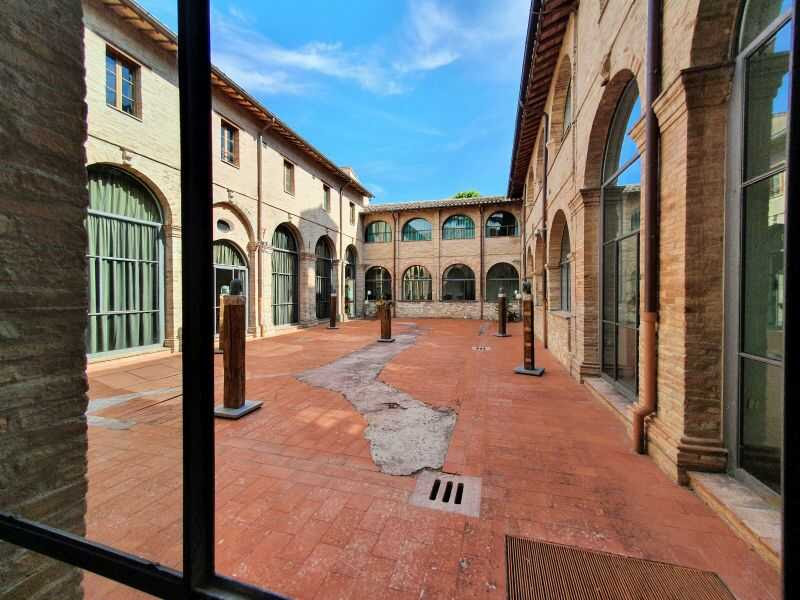
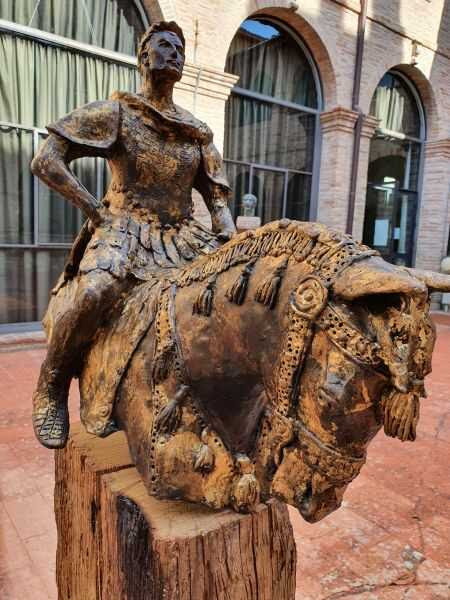

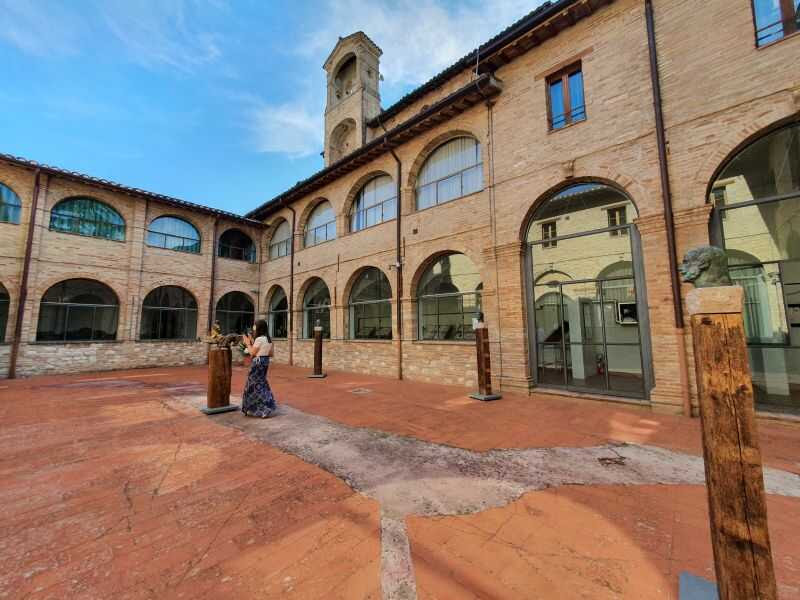
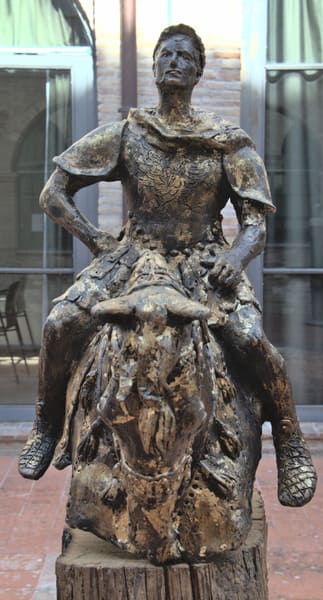
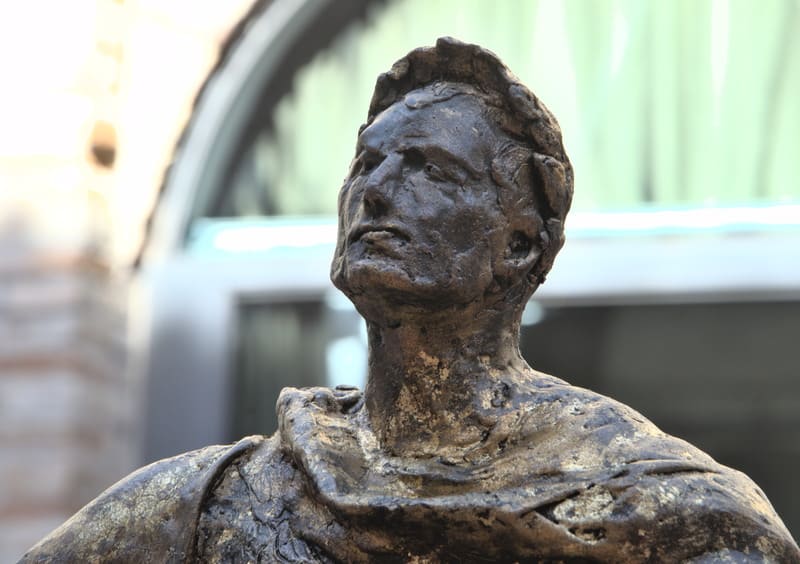
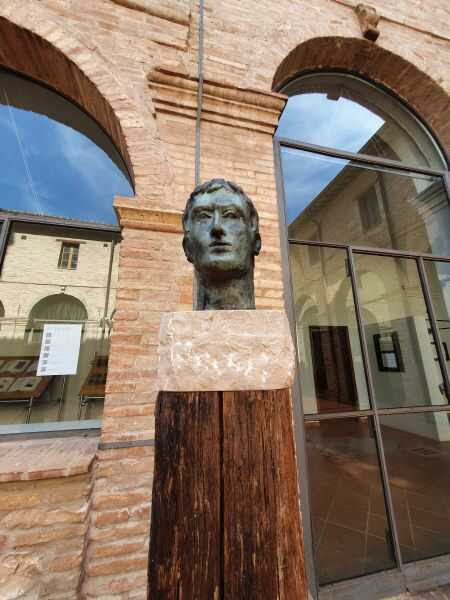
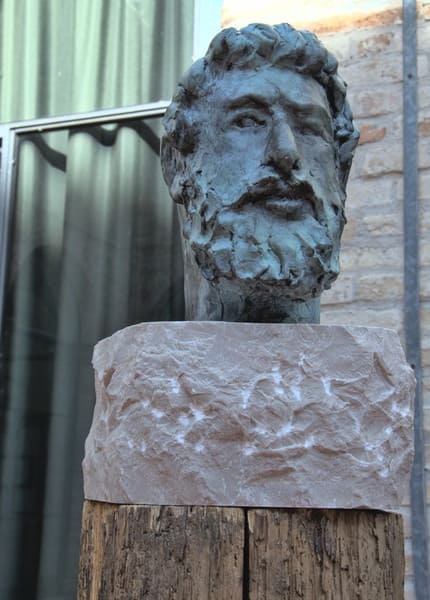
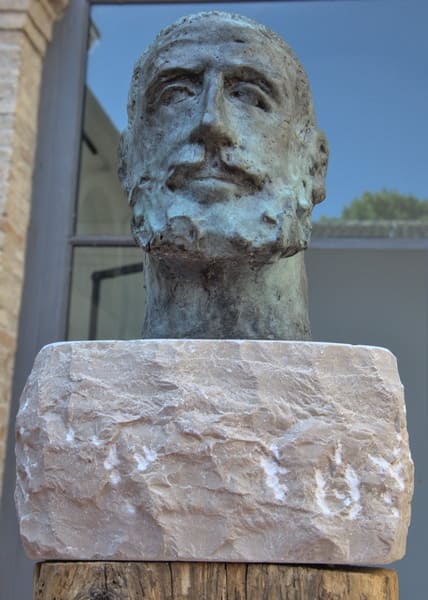
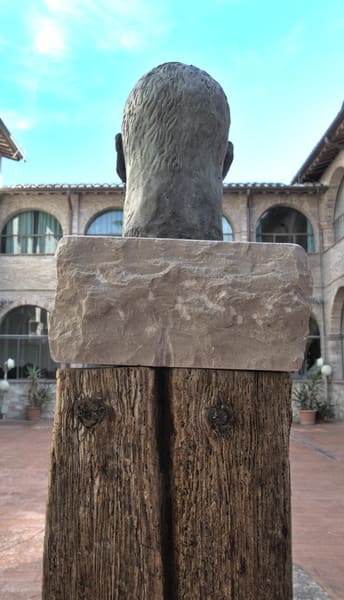
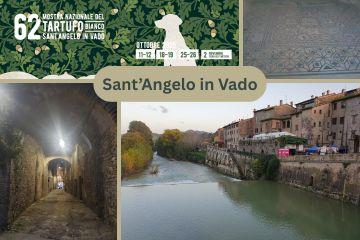

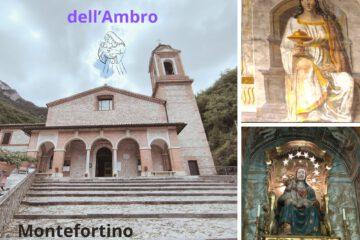
0 Comments